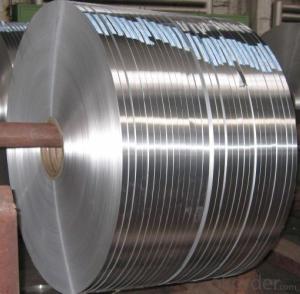Aluminum Reflective Strips for Solar Reflector
- Loading Port:
- Shanghai
- Payment Terms:
- TT OR LC
- Min Order Qty:
- 2.5
- Supply Capability:
- 5000 m.t./month
OKorder Service Pledge
OKorder Financial Service
You Might Also Like
Aluminum Reflective Strips for Solar Reflector
l Product Introduction
The Aluminum Strip is mainly used for refrigerator, cable ,capacitor shell material, steal-protection cover, cable sheathing, composite pipe and tube, water pipe etc. It has the property of deep drawing, high thickness accuracy, and low earring rate, etc.
l Features of aluminum strip
It has excellent thickness uniformity, slitting quality and high purity
1. PP metalized film have excellent self-healing performance
2. The selvedge is thickened, the PP metalized film welded performance is fine
3. the margin could be customized freely
4. The thickness of plate could be adjusted conveniently
l Packaging & Delivery
Packaging detail: Covering with brown paper and plastic bag then packed with wooden plywood then directly loading into container for transshipment. For the thickness which is more than 1.50mm, one paper interleave into two sheets.
Delivery detail: within 30 days

l Company Profile
CNBM International Corporation, China National Building Materials (Group) Corporation, is one of the largest companies in China building material & equipment industry, with 42,800 employees and sales in 2005 of US Dollar 4.395 billion. In 2006, China National Building Material Company Limited was listed on Hong Kong Stock Market with the stock code as 3323.
Aluminium Strip has always been one of the most popular products in CNBM. With advanced technic skills and equipment, CNBM has produced high quality aluminium strips that meet international standard.
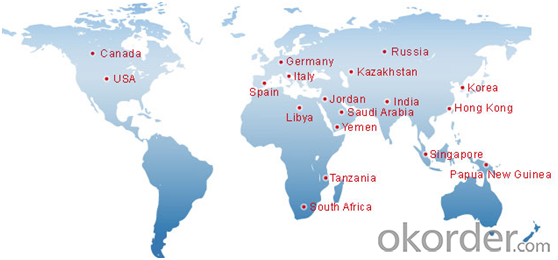
l Product Images
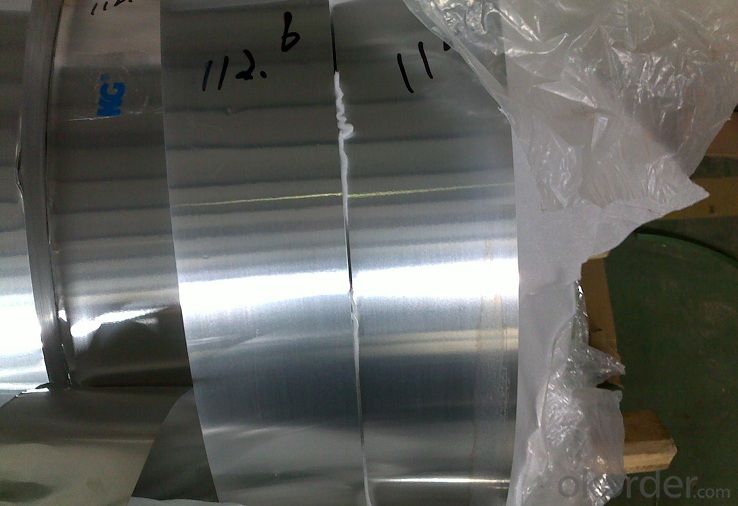
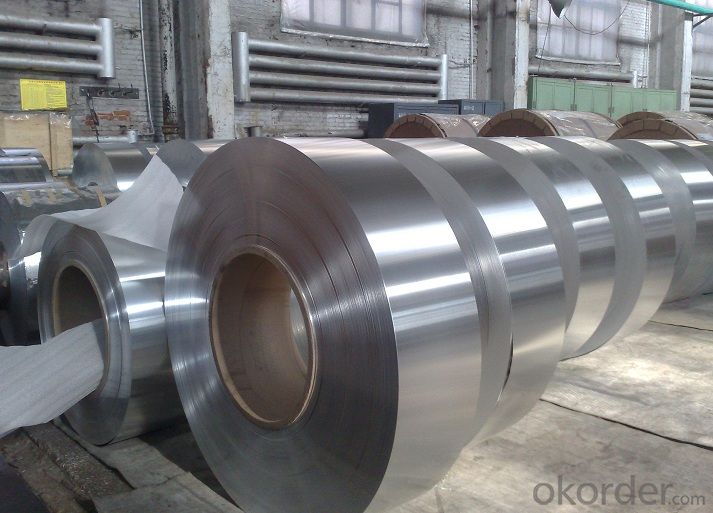
l Certificates
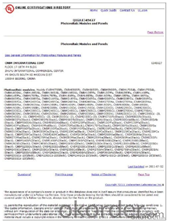


l FAQ
Q: Do you provide free samples?
A: Yes, free samples will be sent to you on freight at destination.
Q: Can I get your latest products catalogue?
A: Yes, it will be sent to you in no time.
Q: What is the MOQ?
A: 2.5 tons
Q: What are your payment terms?
A: We accept L/C, T/T.
- Q:I have tried every possible method that I could find on the web for cleaning aluminum, tungsten, filler wire. Nothing has seemed to work. I've tried looking for leaks in the argon line. I'm getting decent welds but there is gunk in the welds for sure. I'm worried about overall strength of the welds. Does anybody out there know of a tried and true method for cleaning aluminum, tungsten, filler etc. that is sure to work? If I can follow that method and still have problems It could possibly be a problem with the machine. Any help would be much appreciated.
- Preweld cleaning requires two operations: oil/grease removal and oxide removal. As below, remove oils and greases first, then remove the oxide. Don’t reverse this order. Take the following steps before welding aluminum: 1. Remove oil, grease, and water vapor using an organic solvent such as acetone or a mild alkaline solution like a strong soap. You may also use citrus-based degreasers, but be sure to rinse and dry the part before welding. 2. Remove surface oxides with a stainless steel wire brush (used only for aluminum) or strong alkaline or acid. Many welding suppliers sell oxide-removal solutions in spray or squeeze bottles for local application. Exercise extreme care when handling these solutions, and again, rinse and dry the part before welding. 3. Assemble the joint. If it won't be welded immediately, cover the joint with brown Kraft paper to prevent dirt and grit in the air from getting into the joint. 4. Keep the aluminum dry and at room temperature. 5. Weld within a few days. Clean the joint again if it isn't welded within that time. Good luck!!!
- Q:What is the maximum temperature resistance of aluminum sheets?
- The maximum temperature resistance of aluminum sheets typically ranges from 300 to 600 degrees Celsius, depending on the specific alloy and grade of aluminum used.
- Q:Are the aluminum sheets suitable for manufacturing architectural column covers?
- Yes, aluminum sheets are suitable for manufacturing architectural column covers.
- Q:Are aluminum sheets suitable for use in cryogenic environments?
- Yes, aluminum sheets are suitable for use in cryogenic environments. Aluminum has excellent thermal conductivity and low density, making it an ideal material for cryogenic applications. It can withstand extremely low temperatures without losing its structural integrity or experiencing significant thermal expansion. Additionally, aluminum has good corrosion resistance and can be easily fabricated into various shapes and sizes. These properties make aluminum sheets commonly used in cryogenic systems, such as cryostats, superconducting magnets, and liquid nitrogen storage tanks.
- Q:If you're familiar with some of my previous questions, you'll know I have a thing for DC-3's, and I'd like to buy one and fix it up at some point in my life. I was looking at pictures on Google for my desktop background and saw several with shiny chrome/aluminum bodies. Well, first of all, is it chrome or polished aluminum? Second, would I be able to buy a DC-3 painted this God-awful forest green and put whatever it is (chrome/aluminum) on said plane? Or is it something that the plane has to be built with originally?
- Polished aluminum, get a couple heavy duty buffers and some for your friends and then buy stock in Flitz. You can also get it where you want it and paint it with clearcote to keep it a littl better, or what most do; paint it a light gray or silver color. You can strip it, but strip and paint is not cheap. Also, since the controls are fabric covered, they will never match the polished fuselage, that's why paint is better.
- Q:How do you determine the thickness tolerance of an aluminum sheet?
- To ascertain the thickness tolerance of an aluminum sheet, one must take into account several factors. Initially, it is crucial to refer to the industry standards and specifications for aluminum sheets. These standards typically offer guidelines and tolerances for different thicknesses of aluminum sheets, which can vary depending on the specific alloy and grade of the material. Subsequently, it becomes essential to utilize precise measuring equipment such as calipers or micrometers to precisely measure the thickness of the aluminum sheet. Multiple measurements should be taken at various locations on the sheet to account for any potential discrepancies. Once the measurements are acquired, they should be compared to the specified thickness tolerance provided by the industry standards. The tolerance generally represents the acceptable range in which the actual thickness of the sheet can deviate. For instance, if the specified thickness tolerance is ±0.002 inches, it signifies that the sheet's thickness can vary within this range. If the measured thickness falls within the specified tolerance range, the sheet is deemed to be within tolerance. However, if the measured thickness exceeds the upper or lower limit of the tolerance range, it indicates that the sheet is out of tolerance and may not meet the required specifications. In certain instances, it may be necessary to consult with the aluminum sheet's manufacturer or supplier to determine the specific tolerance requirements for a particular application. They can offer additional information and guidance regarding the appropriate thickness tolerance to ensure the sheet fulfills its intended purpose. All in all, the determination of the thickness tolerance of an aluminum sheet involves adhering to industry standards, employing accurate measuring equipment, and comparing the measured thickness to the specified tolerance range. This process guarantees that the sheet meets the required specifications and can be effectively utilized in diverse applications.
- Q:What are the different types of coatings applied to aluminum sheet?
- Aluminum sheet can be coated with various types of coatings, each possessing its own unique properties and advantages. Some commonly used coatings are as follows: 1. Anodizing: This process involves the formation of a protective layer of aluminum oxide on the sheet's surface through electrochemical means. Anodizing enhances the appearance of aluminum by creating a vibrant and long-lasting finish, while also providing excellent resistance against corrosion. 2. Powder Coating: A dry powder is applied to the aluminum sheet using electrostatic methods, and then cured under heat to form a robust and protective coating. Powder coating offers outstanding durability, chip and scratch resistance, as well as a wide range of color and finish options. 3. Paint: Aluminum sheet can be coated with paint, offering both aesthetic appeal and protection. The paint is applied as a liquid and then cured under heat to create a strong and durable coating. Paint coatings provide versatility and customization options, including a vast array of colors and finishes. 4. Laminating: To provide additional protection against scratches, abrasion, and UV damage, a thin layer of protective film or laminate is applied to the surface of the aluminum sheet. Laminating enhances the appearance of the sheet while ensuring its long-lasting durability. 5. Conversion Coatings: Chemical treatments are employed in conversion coatings to convert the surface of the aluminum sheet into a more corrosion-resistant compound. Examples of conversion coatings include chromate conversion coatings and phosphating, which create a protective layer, improving the adhesion of subsequent coatings. 6. Clear Coatings: Clear coatings, such as lacquer or clear powder coat, can be utilized to safeguard aluminum sheet against oxidation and corrosion while maintaining its natural appearance. Clear coatings are commonly used when the goal is to preserve the metallic look of the aluminum. These are just a few illustrations of the diverse range of coatings that can be applied to aluminum sheet. The selection of the appropriate coating depends on factors such as desired appearance, required level of protection, and the specific application of the aluminum sheet.
- Q:What are the aluminum plates for?
- Defense (cover containing polyethylene moistureproof layer of kraft paper embossing aluminum alloy), special mould. The tensile aluminum alloy aluminum coated aluminum. Special stamping. Electronic gasket aluminum, alloy aluminum alloy electric radiator. Special aluminum curtain wall coating. (fluorocarbon, polyester) aluminum coil, aluminum coil, special signs aluminum plate, color coated aluminum sheet, aluminum ceiling coating, aluminum plate, aluminum plate pattern, embossing aluminum / aluminum (pointer type, orange peel pattern, diamond, five ribs, aluminum strip). Aluminum wire and cable, transformer Using aluminum strip, aluminum foil, pressure type aluminum corrugated corrugated aluminum plate. Color coating, special aluminum plate, aluminum plate cable tray, material: 1100.1200.1050A.1060.1070.1080.1145.2A11.3003.3A21.3004.3005.3104.3105.LF21.5A02.5A05.5005.5754.5052.5083.5082.5A03.6061.6063.6082.8011. material; H111.H112.H18.H26.H16.H22.H32.H34.H36.H14.H24.H12.T4.T5.T6.O.F state can meet the requirements of customers
- Q:What are the different methods of surface treatment for aluminum sheets?
- There are several methods of surface treatment for aluminum sheets, each serving different purposes and achieving specific results. Some common methods include anodizing, chromate conversion coating, painting, and powder coating. Anodizing is a popular method used to enhance the corrosion resistance and durability of aluminum sheets. It involves immersing the sheets in an electrolytic bath and applying an electric current to create a controlled oxide layer on the surface. This process results in a protective and decorative coating that can be further colored or sealed. Chromate conversion coating, also known as chemical conversion coating or chromating, involves coating the aluminum sheets with a thin layer of chromate. This method provides excellent corrosion resistance and improves paint adhesion. Chromate conversion coatings can be clear or have a yellowish or iridescent appearance. Painting is another method widely used to protect aluminum sheets and enhance their aesthetic appeal. The sheets are typically pre-treated with a primer to improve adhesion, and then a topcoat is applied for protection and color. Painted aluminum sheets come in a vast range of colors and finishes, making them suitable for various applications. Powder coating is a durable and environmentally friendly method of surface treatment for aluminum sheets. It involves electrostatically applying a dry powder onto the sheets and then curing them in an oven. The powder melts and fuses to form a tough and attractive coating. Powder coating offers excellent resistance to corrosion, chemicals, and UV radiation. In addition to these methods, there are other surface treatment techniques such as polishing, buffing, and mechanical finishes that can be employed to achieve specific desired appearances or surface qualities. Overall, the choice of surface treatment method for aluminum sheets depends on factors such as the desired level of corrosion resistance, aesthetic requirements, environmental considerations, and the intended application of the sheets.
- Q:Can aluminum sheets be used for cladding?
- Indeed, cladding can certainly make use of aluminum sheets. The utilization of aluminum as a cladding material is widespread owing to its plethora of advantageous attributes. Its lightweight nature, durability, resistance to corrosion, exceptional thermal and acoustic insulation properties all contribute to its popularity. Furthermore, aluminum is highly malleable, granting designers a wide array of possibilities. The application of aluminum cladding is prevalent in both residential and commercial constructions, serving to provide protection, enhance aesthetic appeal, and boost energy efficiency.
1. Manufacturer Overview |
|
|---|---|
| Location | |
| Year Established | |
| Annual Output Value | |
| Main Markets | |
| Company Certifications | |
2. Manufacturer Certificates |
|
|---|---|
| a) Certification Name | |
| Range | |
| Reference | |
| Validity Period | |
3. Manufacturer Capability |
|
|---|---|
| a)Trade Capacity | |
| Nearest Port | |
| Export Percentage | |
| No.of Employees in Trade Department | |
| Language Spoken: | |
| b)Factory Information | |
| Factory Size: | |
| No. of Production Lines | |
| Contract Manufacturing | |
| Product Price Range | |
Send your message to us
Aluminum Reflective Strips for Solar Reflector
- Loading Port:
- Shanghai
- Payment Terms:
- TT OR LC
- Min Order Qty:
- 2.5
- Supply Capability:
- 5000 m.t./month
OKorder Service Pledge
OKorder Financial Service
Similar products
New products
Hot products
Related keywords
